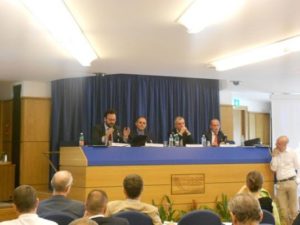Italy: 55 % Tax Deductions until 30 June 2013
August 14, 2012
The latest amendments to Italy’s tax deduction policies resulted in good – and bad – news. According to the “Decree on Growth”, which became effective on 25 July 2012, the 55 % tax deductions will stay unchanged for another six months, until 30 June 2013. Originally, the tax reductions were to expire on 31 December 2012, with the Decree on Growth draft reducing the percentage to 50 %. So far, so good! But, Italy’s solar thermal industry association Assolterm also had some other requests – which were not met.
For example, Assolterm had asked to reduce the time in which the 55 % investment can be deducted from 10 to 5 years (http://www.solarthermalworld.org/content/italy-negotiations-new-government). The government, however, did not follow up on this request and in the “Decree on Growth”, the 55 % can still only be recovered within a 10-year period. Maximum deductible expenses are still at EUR 60,000.
Later, the first impression seemed to be confirmed by the Italian government apparently not wanting to bet on tax deductions to support renewable heat and improve energy efficiency in the Italian building stock (see also http://www.solarthermalworld.org/content/italy-round-table-ways-out-crisis).
Assolterm has come up with three factors which have consequently reduced the effectiveness of the 55% tax deduction and prevented a real take-off:
- insufficient information campaigns, especially about the mechanism itself and the advantages it has
- limited time and year-to-year uncertainty about an extension of the programme, turning it into a “stop-and-go” issue for companies and citizens
- changing recovery times, which have gradually weakened the mechanism, making it unattractive
Still, it is interesting to note that although the government has not done enough to make the 55% tax deductions more effective, the results (see http://www.solarthermalworld.org/content/italy-solar-energy-cheapest-energy-saving-measure-tax-deduction-scheme) seem to suggest that important energy efficiency targets have indeed been achieved and that citizens, especially in northern Italy, have been successfully persuaded of the programme’s usefulness and convenience. A recently published study by the ENEA (Italian National Agency for New Technologies, Energy and Sustainable Economic Development) has made it clear how it has been mainly the solar thermal customers in northern Italy who used the 55 % regulation. The reasons are obvious:
- Northern Italy has, on average, provided a better supportive legislative framework and a more conducive environment for solar thermal technology
- The share of families with an income below the minimum threshold and no tax payments is higher in the south than in the north. Also, it may be less appropriate to use tax deductions in a region with lower production and labour costs, such as in the south of the country, making the mechanism less attractive or even unusable.
More Information:
http://www.assolterm.it
This text was written by Valeria Verga, Secretary General of the Italian solar thermal association Assolterm.


